A Private Tour in North Norfolk today. It was a little more cloudy first thing, but brightened up nicely – sunny and warm in the afternoon, but with a light northerly wind just keeping a lid on the temperature.
In the hope of catching up with a few waders, we headed over to Wells first thing this morning. As we got out of the minibus, a Grey Partridge ran out into the field opposite, pausing for a minute or so before heading off further.

We hadn’t even finished getting everything we needed out of the minibus before one of the Holkham wardens walked over to tell us that a pair of Black-winged Stilts had just been found here this morning. We looked over to the flooded meadow beyond and could see the Stilts in amongst the Avocets and Lapwings. We walked over for a closer look.
The Black-winged Stilts really stood out, with their black wings, white bodies and very long, bright pink legs. They were busy feeding in the shallow water – the male with black back and black markings on the back of its head and neck, the female with a slight brown tinge to the mantle.
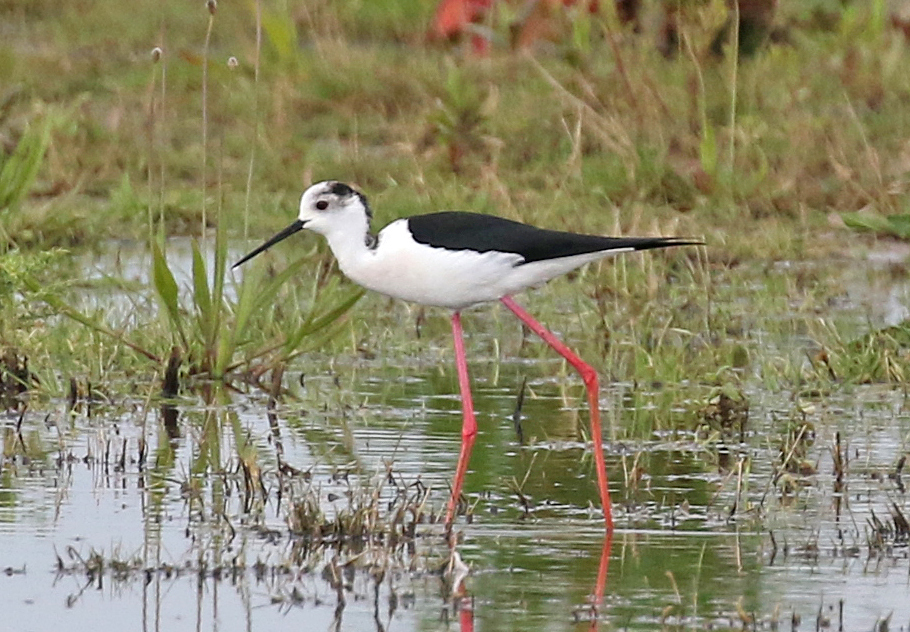
The Stilts would occasionally wander too close to the breeding Avocets and their chicks and were chased away a couple of times, at one point flying further back before returning to the same corner nearest the path.
Black-winged Stilts are scarce visitors here. They have started to turn up more often in recent years, as birds overshoot in the spring on their way north from their wintering grounds in Africa. They are also breeding more regularly here, perhaps in response to a warming of the climate.
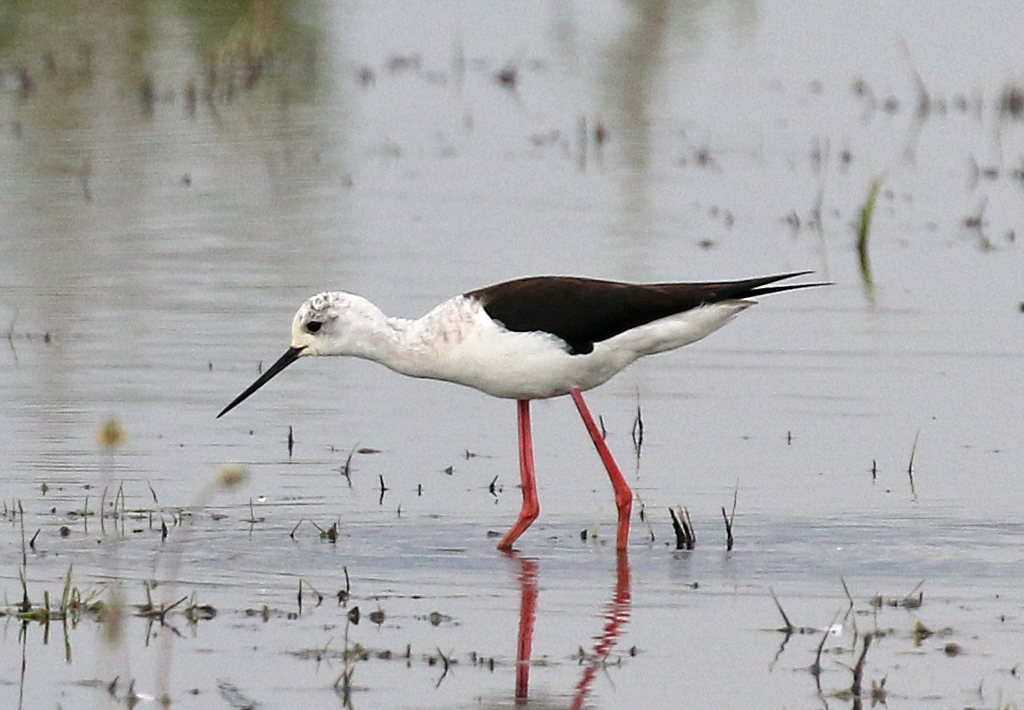
In the thicker grass there were more Lapwings with chicks. There was no shortage of Redshanks too, with two squabbling at the back of the pool. The Grey Heron was here again, but was getting mobbed and chased by all the other birds today, and didn’t manage to grab anything. It eventually flew off to the back of the pool the other side of the track, chased by several Avocets.
A couple of Sedge Warblers were singing off against each other in the bushes in the ditch beside the path. Out in the grass, we spotted a couple of Skylarks and a Pied Wagtail. A few Common Swifts were zooming back and forth, low overhead, catching insects.
Looking out to the pool the other side of the track, we found some different waders. A large flock of Black-tailed Godwits, were mostly asleep. They looked to be mostly young birds, in their 2nd calendar year, not moulting into breeding plumage and in no hurry to get up to Iceland to breed. Four Greenshanks were feeding with the few which were awake. Two Little Ringed Plovers were hiding in the vegetation on one of the islands. A Common Sandpiper flew past and landed back on the other side.
There were a few ducks on here too. Several Shelduck, Gadwall and Shoveler, plus a pair of Tufted Ducks. Most of the wintering Teal have long since departed but a lingering drake was asleep on the island. Two Brent Geese, also due to leave to head off back to Siberia, were feeding in the grass.
As more people started to arrive to see the Black-winged Stilts, we decided to walk on over to the seawall. Another Sedge Warbler was signing in the reeds in the ditch and there were more warblers singing in the bushes. We could hear the sweet descending scale of a Willow Warbler, and a Cetti’s Warbler shouting. A Chiffchaff perched in the top of a dead tree chiffing and chaffing. A Diamond-back Moth flushed from the long grass as we walked through was one of the migrants which had come in from Scandinavia in the last week.
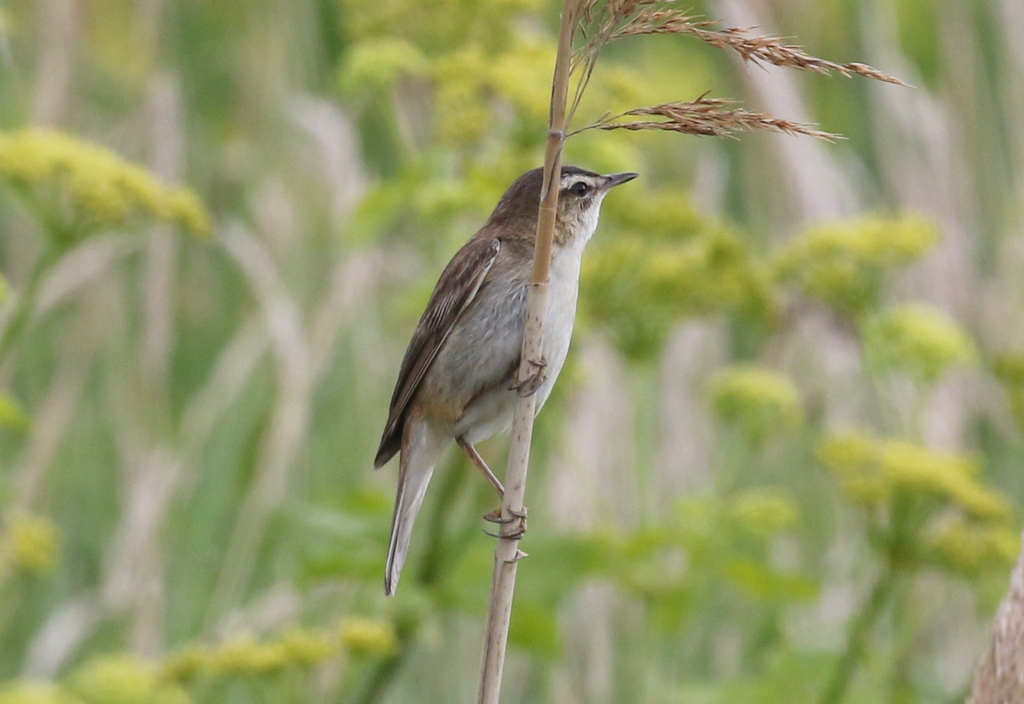
From up on the seawall, we could hear a Reed Warbler singing in the reeds. We couldn’t see it, but then we spotted another Reed Warbler climbing up a reed stem in the ditch below us, picking insects from the brambles on the bank. Several Greenfinches flew in arguing loudly. We stopped to scan the last pool. There were lots of Avocets on here, several pairs with young already, and a good number of Lapwings with chicks. Great to see that the waders are doing well here this year.
On the walk back to the minibus, someone told us that a Quail was singing from the field so we stopped to listen to the distinctive ‘wet-me-lips’ refrain. There was quite a crowd gathered now, so we decided to make an escape before it got too much busier.
As we drove west, a male Marsh Harrier was hunting the grazing meadows by the road, dropping down out of sight into the grass. There had been a report of a Dotterel again today at Choseley, so we swung round that way. A Corn Bunting was singing from further up in the hedge as we got out of the minibus, so we had a look at it in the scope. As we walked down the road, another Corn Bunting was singing here too.
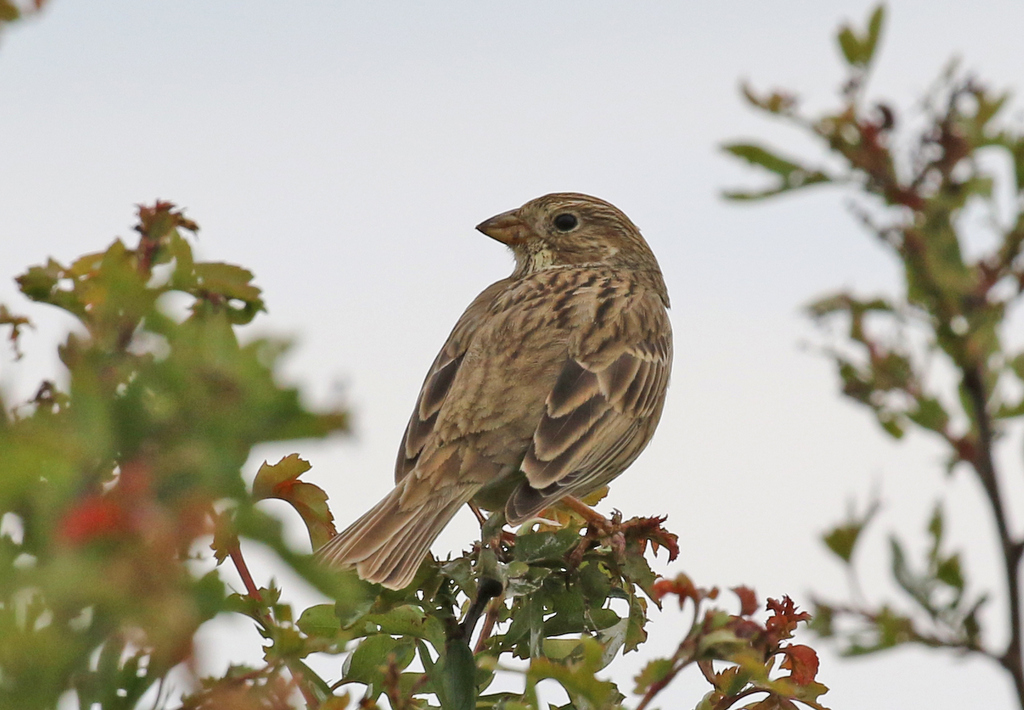
A Common Whitethroat was singing from the bushes, and flew off ahead of us, disappearing into the hedge. A couple of Chaffinches were singing along here too. Two Red-legged Partridges walked out from the edge of the field and we could see several Brown Hares out in the middle.
There were a couple of people already looking for the Dotterel, and we had a good scan of the field as we walked down, but there was no sign of it. A Common Buzzard circled up over the ridge, and was joined by three Red Kites and two Kestrels. An adult Mediterranean Gull flew over, flashing its white wings. We had a quick drive round via the drying barns, picking up a couple of Yellowhammers on the wires on the way. A Stoat was standing in the edge of the road, running in to the verge as we approached. Then we dropped down to Titchwell for lunch.
After lunch, we made our way out onto the reserve. A Reed Warbler was singing in the reeds as we walked up along the main path. We stopped opposite the reedbed pool, where we could hear Bearded Tits calling. They were mostly a bit further back in the reeds today, but we saw several zipping back and forth. A female Bearded Tit came up from the reeds in front of us and climbed up a stem at the back of the pool, before flying off back into the reeds beyond. There were more Sedge Warblers feeding round the edges of the pools and several Reed Buntings singing.
Lots of gulls were hawking for insects out over the reedbed pool, mostly Black-headed Gulls, but we spotted a much smaller Little Gull in with them. Its more agile, tern-like flight stood out, as did the black ‘w’ on its wings, a first summer bird. We could hear the Mediterranean Gulls flying in and out too, calling, heading inland to feed or back to the breeding colony on the Freshmarsh.
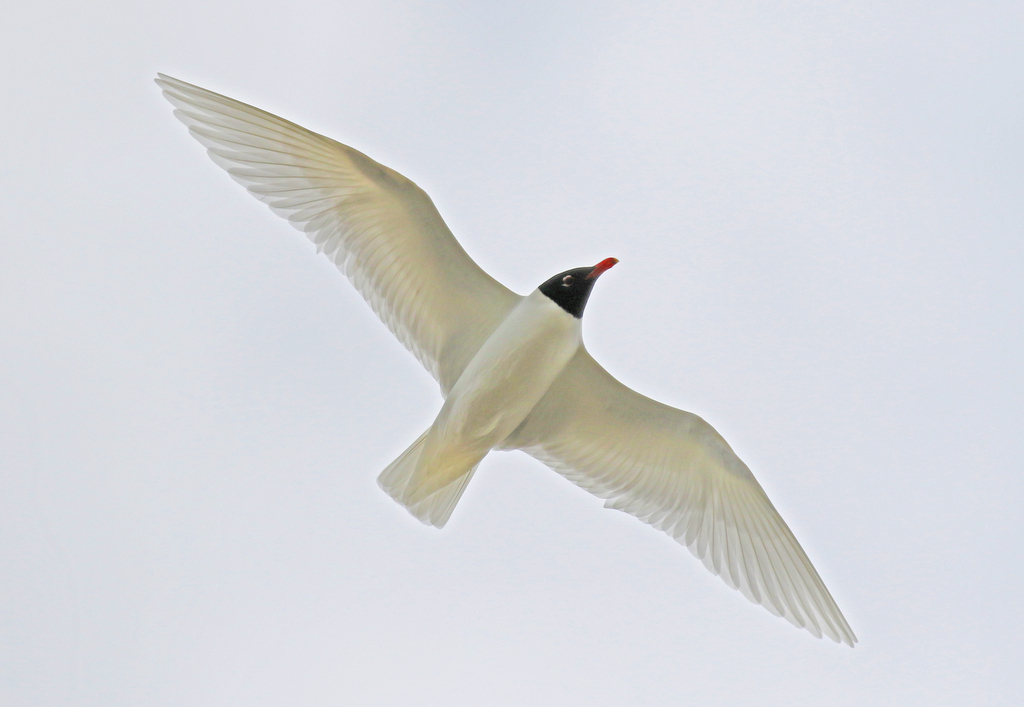
A couple of Marsh Harriers came up out of the reeds and flew round before dropping down again. There were a few Common Pochard on the pool, and two Little Grebes in the nearby channel. On the other side of the bank, a lone breeding plumaged Grey Plover was out on the Lavender Marsh pool.
Continuing on to the Freshmarsh, the view was dominated by all the gulls on here at the moment. We could hear Sandwich Terns calling and found a couple on the nearest island which we got in the scope. A Common Tern flew in with a fish, and gave it to its partner on the small brick island. Then we watched it drop into the water for a quick bathe, before flying back out towards the sea, presumably after more fish.
There are also lots of Shelduck on the Freshmarsh at the moment. The variety of wildfowl has dropped now, for the summer, but there were still a few Shoveler too, and we got the scope on a drake Gadwall just below the bank, for a closer look. There were plenty of Avocets here, but not many other waders today. A single Ringed Plover was feeding on the island in front of Parrinder Hide.
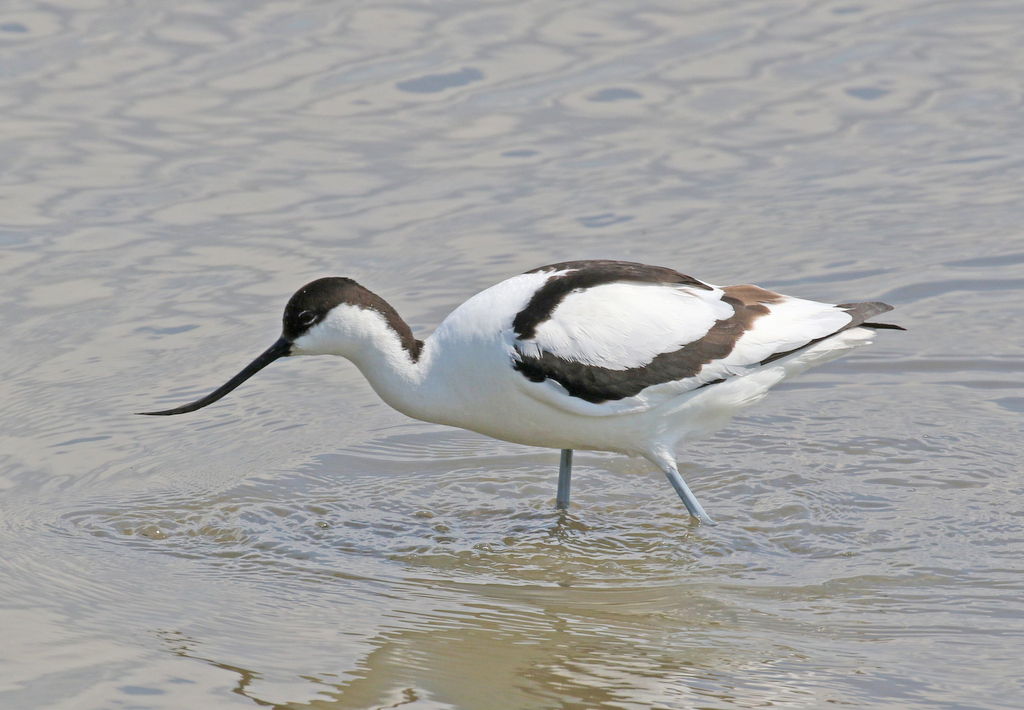
We made our way round to Parrinder Hide, where we had a much better view of the Little Gull, even if it was mostly asleep now. We could see just how small it was, in comparison with a Black-headed Gull next to it. We also had a closer look at a couple of the Mediterranean Gulls which are nesting in the fenced-off ‘Avocet Island’. A single immature Common Gull was in with all the smaller gulls loafing around the islands. More strangely, a Kittiwake was on here too, but it appeared to be oiled and was trying to preen the oil off its belly, which was probably why it was not where it should be, out to sea.
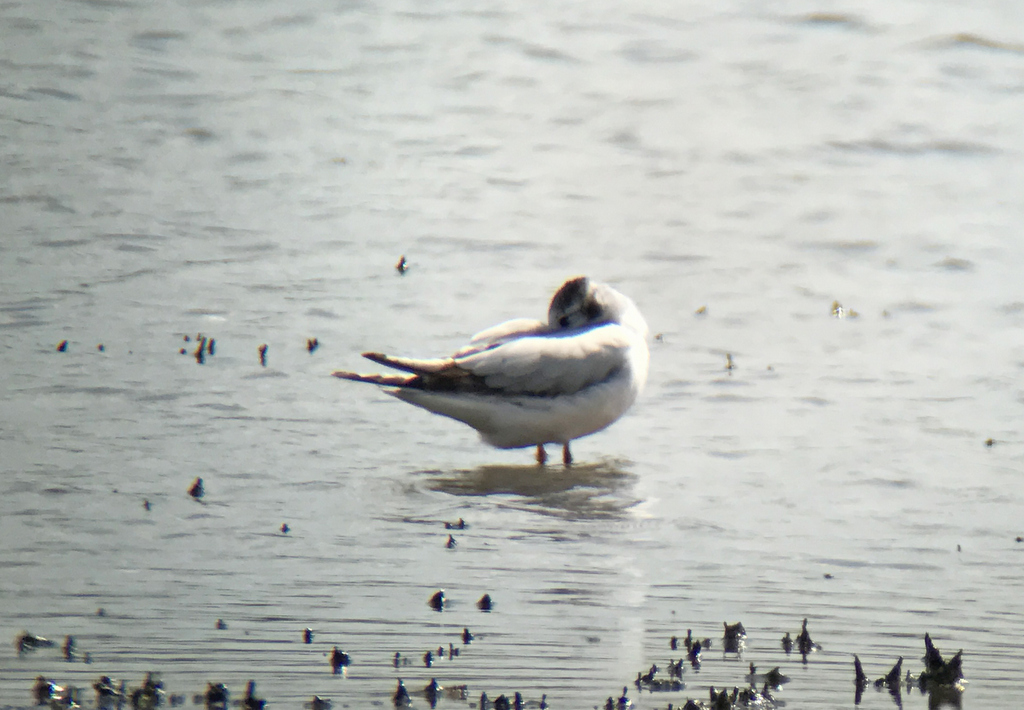
A Common Sandpiper dropped in briefly on the back edge of the island where all the gulls were resting, but quickly flew off round the back of ‘Avocet Island’. A lone Bar-tailed Godwit dropped in, and through the scope we could see its streaked upperparts and slightly upturned bill.
There weren’t many birds on Volunteer Marsh from the other side of Parrinder Hide, apart from sixteen Grey Plover, mostly in smart black-bellied breeding plumage. We decided to press on to the beach. There were noticeably fewer Brent Geese on the saltmarsh today, as we passed – it appears most of them have finally headed off in the last few days, back to Siberia for the breeding season. There were hardly any birds at all on the Tidal Pools.
Out at the beach, the tide was out. There are not so many waders here now, as birds have gone north to breed. We could still see a good number of Oystercatchers on the mussel beds, and three Turnstones with them. Several Great Crested Grebes were still lingering offshore.
We were just about to head back when a Spoonbill appeared on the beach at the far end of the mussel beds. It was an adult – through the scope, we could see the yellow tip to the black bill and the mustard wash on the breast. A second Spoonbill circled round over the dunes and dropped down onto the Tidal Pools. We walked back, and had a better view of this one as it fed in the shallow water.

As we walked past the Freshmarsh, we noticed a small plover on the nearest island. Rather than the Ringed Plover we had seen earlier, this was a Little Ringed Plover. We got it in the scope and could just see its golden yellow eyering, before it flew off. A Grey Heron was perched up in the reeds, surveying one of the pools below the bank as we walked past the reedbed.
We turned onto Meadow Trail, and as we walked through the sallows we could hear a Cuckoo calling. It seemed to be over closer to the Visitor Centre initially, then moved and seemed to be working its way east. We thought we might be able to catch up with it, but when we got out to Fen Hide and got out of the bushes, it had gone quiet. There was no sign of the Turtle Doves down on the tank road this afternoon, but the seed had run out so there was no food left to tempt them in.
Round at Patsy’s Reedbed, we could see several Red-crested Pochards out on the water, the drakes looking very smart at the moment with their orange punk haircuts and bright coral-red bills.
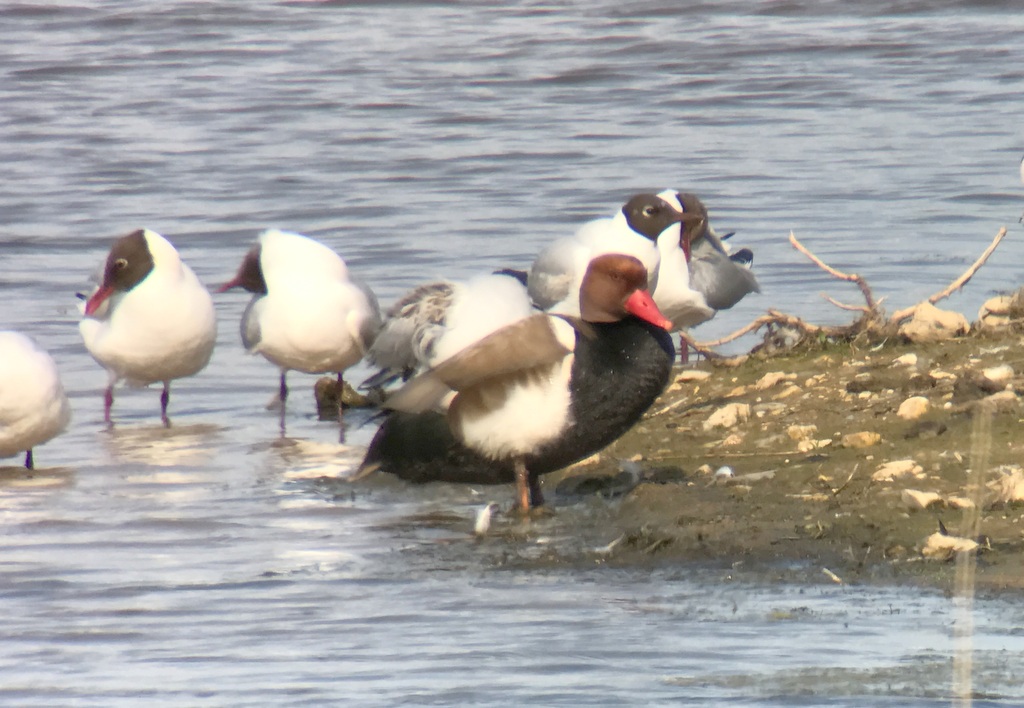
A steady stream of Black-headed Gulls dropped into the pool to bathe, and we picked out several Mediterranean Gulls with them, their jet black hoods and white wings giving them away. A couple of Marsh Harriers circled up over by the edge of Willow Wood. One of the males half appeared to be half displaying to a young female, twisting and turning, before the two of them drifted off over the reeds. Back on Fen Trail, we stopped to watch a male Marsh Harrier flying over and a Blackcap was singing in the sallows beside us.
It was time to head back but we still had time for one more bird. As we drove past a complex of old barns, a Little Owl was perched on a wooden board across an open doorway. We stopped to watch it and after staring at us for a while, it flew back inside.

That was a nice way to end what had been a very pleasant late spring day’s birding, with a nice surprise included.
















